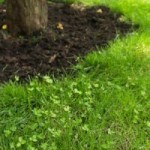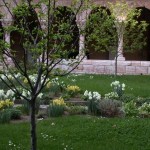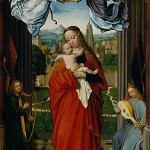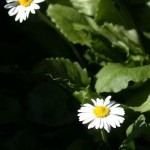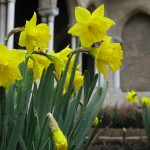Keeping it Green
Left: A bird???s-eye view of Cuxa Cloister. Each quadrant of the garden contains a grass plot bordered with herbs and flowers. Right: Clover is planted in the lawn to provide several horticultural and ecological benefits.
In the spring of 2008, we began renovating the lawns in Cuxa Cloister by thoroughly removing the old grass with a thatch rake. We then added three inches of a mixture of topsoil and compost and raked them evenly. This was followed with a seeding of grass mixed with white clover (Trifolium repens). A thin layer of salt hay was then laid down to help retain water and protect the seed from birds. During this early stage, it is of the utmost importance to keep the soil evenly moist at all times. (Salt hay is preferable to hay as a mulch because it is free of weeds.) Once a lawn is established, however, it is best to water it as infrequently as possible. Most turf professionals recommend infrequent but deep irrigation to ensure the roots are thoroughly watered. There are many ways to conserve water in the maintenance of lawns. The most effective way is to choose the proper grass for your environment. Read more »


